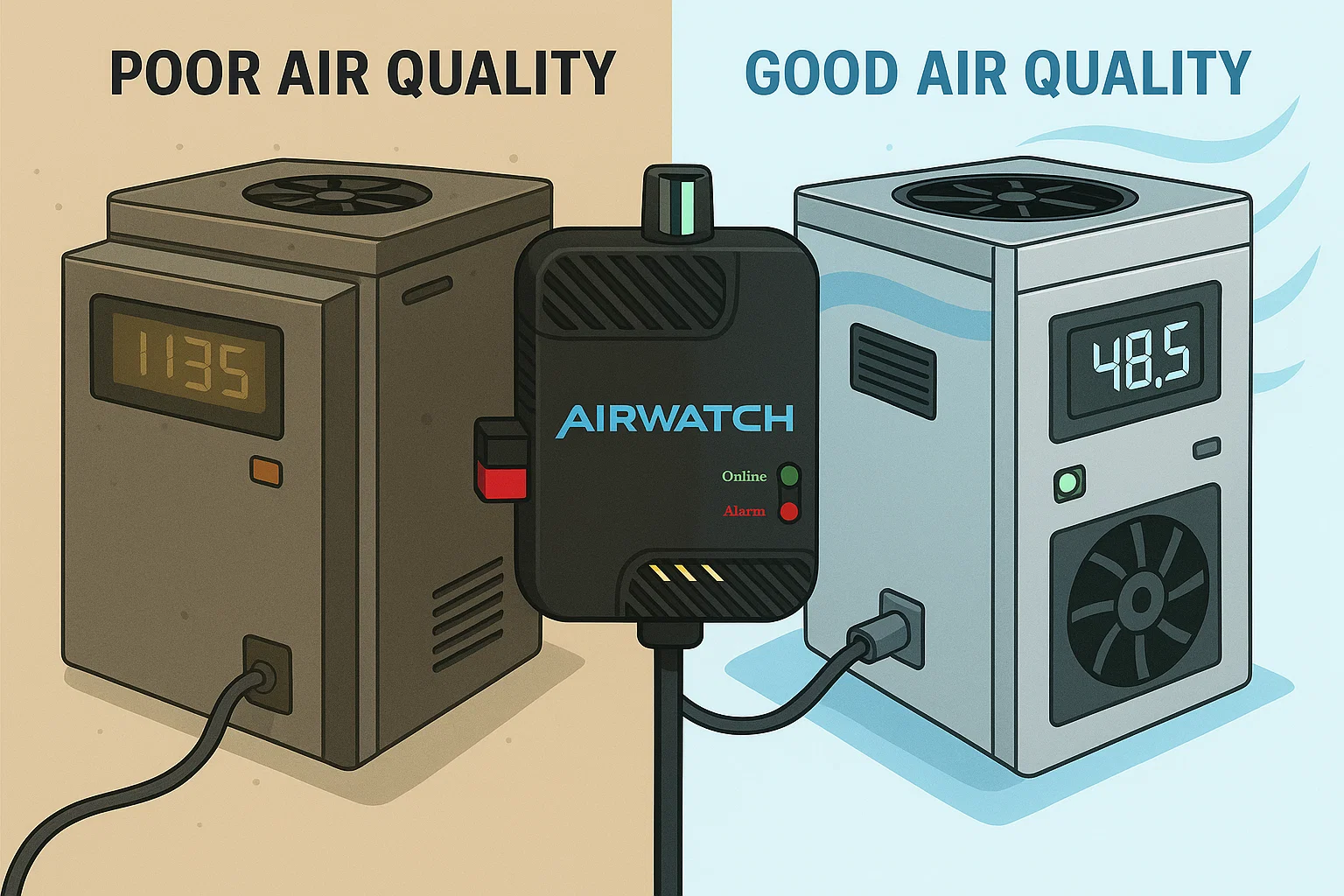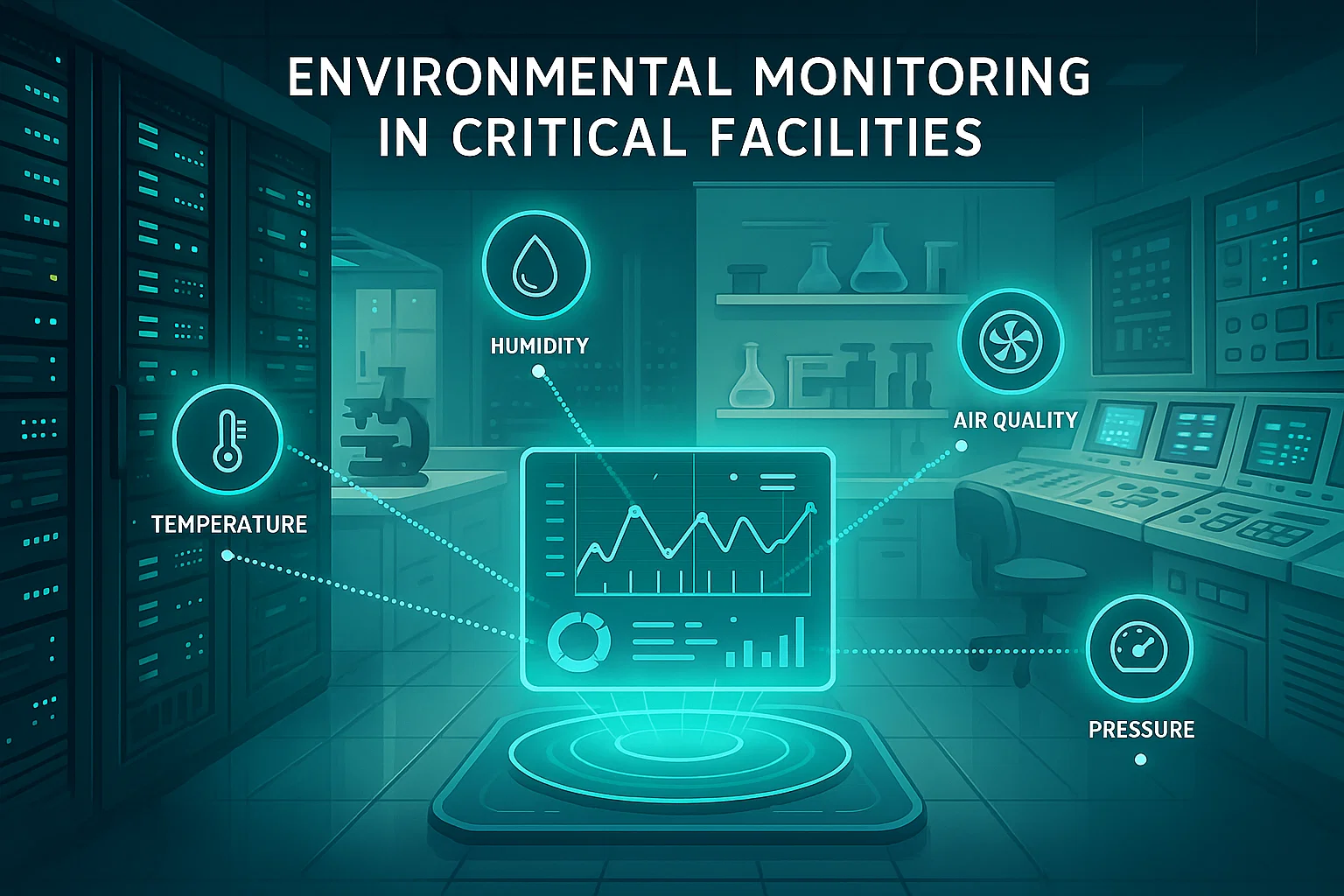Air Quality: A Hidden Threat to Industrial & IT Equipment Performance
Uncover how particulate contamination, corrosive gases, and poor air quality silently degrade electrical equipment performance and discover essential mitigation strategies for optimal facility health.

In critical industrial plants, data centers, and even commercial offices, we often focus on power quality, temperature, and humidity. However, the often-overlooked factor of air quality can be a silent but potent threat to the performance, lifespan, and reliability of sensitive electrical and electronic equipment. Particulate contamination and corrosive gases can lead to insidious degradation, ultimately causing expensive downtime and premature failures.
Risks of Poor Air Quality on Equipment
The impact of subpar air quality manifests in several damaging ways:
- Dust Accumulation & Overheating: Dust and particulate matter (PM2.5, PM10) act as insulators, blocking heat dissipation from circuit boards, cooling fins, and ventilation pathways. This leads to component overheating, reduced efficiency, and accelerated fan failures in servers, control panels, and other equipment.
- Corrosive Gases & Short Circuits: Industrial environments, especially, can expose equipment to corrosive gases like hydrogen sulfide (H₂S), sulfur dioxide (SO₂), and chlorine (Cl₂). These gases can attack metal contacts, solder joints, and printed circuit board (PCB) traces, leading to intermetallic growth (e.g., "whisker" formation), increased resistance, intermittent failures, and even permanent short circuits.
- Blocked Filters & Energy Waste: Clogged air filters not only reduce airflow but also force HVAC systems and equipment fans to work harder, consuming more energy and increasing operational costs. If filters aren't regularly maintained, airborne contaminants can bypass them and enter critical components.
- Static Electricity Discharge: Dry air, often a result of inadequate humidity control, can increase the risk of static electricity buildup and discharge (ESD). While not directly an air quality issue, it's closely related and can damage sensitive electronics.
- Mechanical Abrasion: In environments with high levels of abrasive dust, moving parts (e.g., fan bearings, hard drive components) can experience accelerated wear.
Effective Monitoring and Thresholds
Proactive air quality management begins with accurate, continuous monitoring:
- Particulate Matter (PM): Monitor PM2.5 and PM10 levels to track airborne dust and fine particles, which are a primary cause of overheating and deposition on circuits.
- Corrosive Gases: In industrial settings, specifically track gases like H₂S, SO₂, and other Volatile Organic Compounds (VOCs) that can corrode sensitive electronics.
- Temperature & Humidity: While separate parameters, these are critical for air quality. Optimal humidity levels (e.g., 40-55% RH) prevent both corrosion and static buildup.
Establish clear alarm thresholds based on industry standards (e.g., ISO 14644 for cleanrooms, ASHRAE for data centers) and equipment manufacturer recommendations. Develop Standard Operating Procedures (SOPs) for responding to different alert tiers.
Proactive Mitigation Measures
Once risks are identified, implement robust strategies to protect your assets:
- High-Efficiency Filtration: Employ HVAC systems with appropriate MERV (Minimum Efficiency Reporting Value) rated filters. Regularly inspect and replace filters according to manufacturer guidelines or based on pressure drop readings. Consider HEPA filtration for highly sensitive environments.
- Positive Pressurization: In critical rooms (e.g., data halls, control rooms), maintain a slight positive air pressure relative to adjacent areas. This helps to prevent unfiltered air and contaminants from infiltrating when doors are opened.
- Ingress Protection (IP) Rated Enclosures: For equipment operating in harsh industrial environments, specify and utilize IP-rated enclosures that provide protection against dust and moisture ingress.
- Cable Sealing & Gap Filling: Seal cable entry points and fill gaps in walls, floors, and ceilings to prevent unfiltered air from bypassing HVAC systems.
- Air Scrubbers/Purifiers: In areas with known corrosive gas issues, consider installing specialized air scrubbers or purifiers to remove harmful chemical contaminants.
- Regular Cleaning Protocols: Implement strict cleaning protocols using appropriate (non-conductive, low-lint) tools and cleaning agents to safely remove dust from equipment surfaces and interiors.
💡 The Bottom Line: Consistent air quality control is not an option but a necessity. By investing in proper monitoring and mitigation strategies, facilities can significantly extend equipment life, reduce maintenance costs, stabilize operating conditions across all seasons, and ultimately enhance the overall reliability and resilience of their critical infrastructure.

